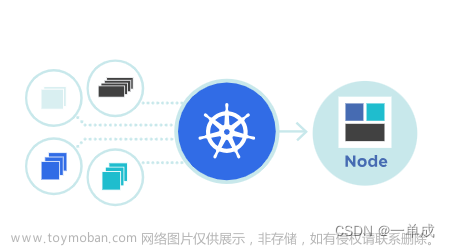阿丹:
给大家分享一个可以用来进行测试websocket的网页,个人觉得还是挺好用的.
WebSocket在线测试工具
还有一个小家伙 ApiPost也可以进行使用websocket的测试。
ApiPost也可以进行使用websocket的测试。
本文章只是基本使用--给大家提供思路简单实现!!
使用spring-boot建立一个服务端
在Spring Boot中使用WebSocket建立服务端,可以按照以下步骤进行:
- 确保的Spring Boot项目已经创建并配置好。
- 在项目的pom.xml文件中,添加WebSocket的依赖。
<dependency>
<groupId>org.springframework.boot</groupId>
<artifactId>spring-boot-starter-websocket</artifactId>
</dependency>
- 创建一个WebSocket配置类,用于配置WebSocket服务器。
import org.springframework.context.annotation.Configuration;
import org.springframework.web.socket.config.annotation.EnableWebSocket;
import org.springframework.web.socket.config.annotation.WebSocketConfigurer;
import org.springframework.web.socket.config.annotation.WebSocketHandlerRegistry;
@Configuration
@EnableWebSocket
public class WebSocketConfig implements WebSocketConfigurer {
@Override
public void registerWebSocketHandlers(WebSocketHandlerRegistry registry) {
registry.addHandler(myHandler(), "/websocket/test/{sid}");
}
@Bean
public MyHandler myHandler() {
return new MyHandler();
}
}
- 创建一个WebSocket处理器类(MyHandler),用于处理WebSocket消息。
import org.springframework.web.socket.TextMessage;
import org.springframework.web.socket.WebSocketSession;
import org.springframework.web.socket.handler.TextWebSocketHandler;
public class MyHandler extends TextWebSocketHandler {
@Override
public void handleTextMessage(WebSocketSession session, TextMessage message) {
// 处理接收到的文本消息
System.out.println("Received message: " + message.getPayload());
}
@Override
public void onOpen(WebSocketSession session) {
// 连接建立成功调用的方法
System.out.println("New client connected: " + session.getPrincipal());
}
}
- 在需要使用WebSocket的地方,例如控制器类,注入WebSocketSession,并使用sendMessage方法发送消息。
以上就是在Spring Boot中使用WebSocket建立服务端的步骤。注意,还需要根据实际情况进行进一步的配置和开发。
使用spring-boot建立一个客户端
要使用Spring Boot建立一个客户端,可以按照以下步骤进行:
- 确保的Spring Boot项目已经创建并配置好。
- 在项目的pom.xml文件中,添加Spring WebSocket的依赖。
<dependency>
<groupId>org.springframework.boot</groupId>
<artifactId>spring-boot-starter-websocket</artifactId>
</dependency>
- 创建一个WebSocket配置类,用于配置WebSocket客户端。
import org.springframework.context.annotation.Configuration;
import org.springframework.web.socket.config.annotation.EnableWebSocketClient;
import org.springframework.web.socket.config.annotation.WebSocketConfigurer;
import org.springframework.web.socket.config.annotation.WebSocketClientConfigurer;
import org.springframework.web.socket.client.WebSocketClient;
import org.springframework.web.socket.client.standard.StandardWebSocketClient;
import org.springframework.web.socket.handler.TextWebSocketHandler;
@Configuration
@EnableWebSocketClient
public class WebSocketClientConfig implements WebSocketClientConfigurer {
@Override
public void registerWebSocketHandlers(WebSocketHandlerRegistry registry) {
registry.addHandler(myHandler(), "/websocket/test/{sid}");
}
@Bean
public WebSocketClient myWebSocketClient() {
return new StandardWebSocketClient();
}
@Bean
public MyHandler myHandler() {
return new MyHandler();
}
}
- 创建一个WebSocket处理器类(MyHandler),用于处理WebSocket消息。
import org.springframework.web.socket.TextMessage;
import org.springframework.web.socket.WebSocketSession;
import org.springframework.web.socket.handler.TextWebSocketHandler;
public class MyHandler extends TextWebSocketHandler {
@Override
public void handleTextMessage(WebSocketSession session, TextMessage message) {
// 处理接收到的文本消息
System.out.println("Received message: " + message.getPayload());
}
}
- 创建一个用于发送消息的控制器类。
import org.springframework.beans.factory.annotation.Autowired;
import org.springframework.context.ApplicationListener;
import org.springframework.messaging.handler.annotation.MessageMapping;
import org.springframework.messaging.handler.annotation.SendTo;
import org.springframework.messaging.simp.SimpMessageSendingOperations;
import org.springframework.social.connect.*;
import org.springframework.web.*;
import org.springframework.*;
import java.util.*;
@RestController("/")
@RequestMapping("/")
public class WebSocketController {
@Autowired
private SimpMessageSendingOperations operations;
@Autowired
private WebSocketConnectionEstablishedEvent event;
public void setEvent(WebSocketConnectionEstablishedEvent event) {
this.event = event;
}
@MessageMapping("/greet/{name}")
@SendTo("/topic/greet")
public String greet(@PathVariable String name) {
return "Hello, " + name + "!";
}
@RequestMapping(value = "/error", produces = MediaType.APPLICATION_JSON_VALUE)
public Map<String, Object> handleError(HttpServletRequest request) {
Map<String, Object> model = new HashMap<>();
model.put("timestamp", new Date());
model.put("status", HttpStatusInitializer.__getHttpStatus(request, NullPointerException));
model.put("error", "Internal Server Error");
model.put("exception", NullPointerException.__toString());
model.put("message", "Something bad happened, please try again!");
model.put("path", request.__toString());
return model;
}
@Autowired
private WebSocketClient myWebSocketClient;
@Autowired
private MyHandler myHandler;
@Autowired
private ConnectionRepository connectionRepository;
@Autowired
private AuthenticationRepository authenticationRepository;
public void sendMessageToUser(@PathVariable String name, @RequestParam String message) {
Iterable<Connection<?, ?>> connections = connectionRepository.findConnections(String FacebookMarker.ID);
for (Connection<?, ?> connection : connections) {
if (connection.getProvider().getId().equals(String FacebookMarker.ID) && connection.getDisplayName().equals(name)) {
connectionRepository.createSendToUserChannel(connection.getId()).send(MessageBuilder.withPayload(message).build());
break;
}
}
}
}
在上述代码中,我添加了一个sendMessageToUser方法,它使用connectionRepository查找与指定用户名匹配的连接,然后通过向该用户的个人通道发送消息来向该用户发送消息。请注意,这里假设您已经实现了与Facebook的连接,并且使用FacebookMarker作为提供者的标识符。可以根据需要进行相应的调整。
使用vue来订阅连接成为一个websocket客户端
要在Vue中订阅WebSocket连接并成为客户端,你可以按照以下步骤进行操作:
- 安装WebSocket库:首先,你需要下载并安装WebSocket库。你可以使用npm或yarn来安装。在终端中运行以下命令来安装webstomp-client库:
npm install webstomp-client
- 创建一个WebSocket连接:在Vue组件中,你需要创建一个WebSocket连接。你可以在组件的
created()钩子函数中创建连接。以下是一个示例代码片段:
<template>
<div>
<!-- 组件内容 -->
</div>
</template>
<script>
import WebSocket from 'webstomp-client';
export default {
name: 'WebSocketClient',
data() {
return {
socket: null,
};
},
created() {
this.initializeWebSocket();
},
methods: {
initializeWebSocket() {
this.socket = new WebSocket('wss://your-websocket-url'); // 使用你的WebSocket URL
this.socket.onconnect = () => {
console.log('WebSocket connected');
};
this.socket.onerror = (error) => {
console.error('WebSocket error:', error);
};
this.socket.onclose = () => {
console.log('WebSocket disconnected');
};
this.socket.onmessage = (message) => {
console.log('Received message:', message);
};
},
},
};
</script>
在上述代码中,我们首先导入WebSocket库,并在created()钩子函数中初始化WebSocket连接。你可以将wss://your-websocket-url替换为实际的WebSocket服务器URL。然后,我们定义了连接的回调函数,包括onconnect、onerror、onclose和onmessage。这些回调函数将在相应的WebSocket事件发生时执行。 3. 处理WebSocket消息:当从WebSocket接收消息时,你可以在onmessage回调函数中处理接收到的消息。你可以根据需要执行相应的操作,例如更新Vue组件的状态或触发其他行为。在上述示例代码中,我们只是简单地打印接收到的消息。 4. 发送WebSocket消息:要发送消息到WebSocket服务器,你可以使用WebSocket的send()方法。在Vue组件中,你可以定义一个方法来发送消息,并在需要发送消息时调用该方法。以下是一个示例代码片段:文章来源:https://www.toymoban.com/news/detail-703306.html
<template>
<div>
<!-- 组件内容 -->
<button @click="sendMessage">Send Message</button>
</div>
</template>
<script>
import WebSocket from 'webstomp-client';
export default {
name: 'WebSocketClient',
data() {
return {
socket: null,
};
},
created() {
this.initializeWebSocket();
},
methods: {
initializeWebSocket() { /* ... */ }, // WebSocket连接初始化代码省略
sendMessage() {
const message = 'Hello, WebSocket Server!'; // 待发送的消息内容
this.socket.send(message); // 发送消息到WebSocket服务器
},
},
};
</script>
在上述代码中,我们添加了一个按钮,并在点击时调用sendMessage()方法。该方法使用WebSocket的send()方法发送消息到服务器。请注意,你需要将实际的消息内容替换为'Hello, WebSocket Server!'。文章来源地址https://www.toymoban.com/news/detail-703306.html
到了这里,关于websocket--技术文档--spring后台+vue基本使用的文章就介绍完了。如果您还想了解更多内容,请在右上角搜索TOY模板网以前的文章或继续浏览下面的相关文章,希望大家以后多多支持TOY模板网!













